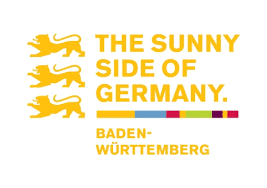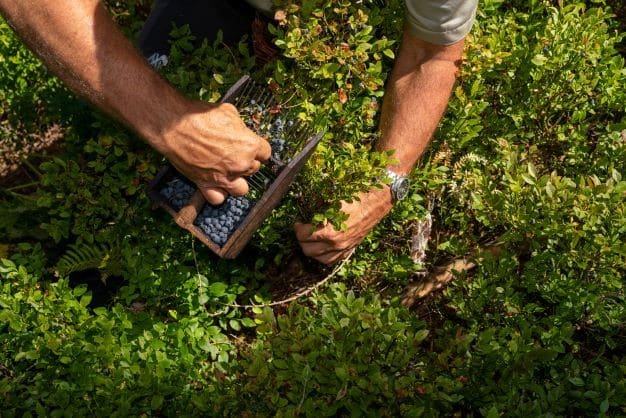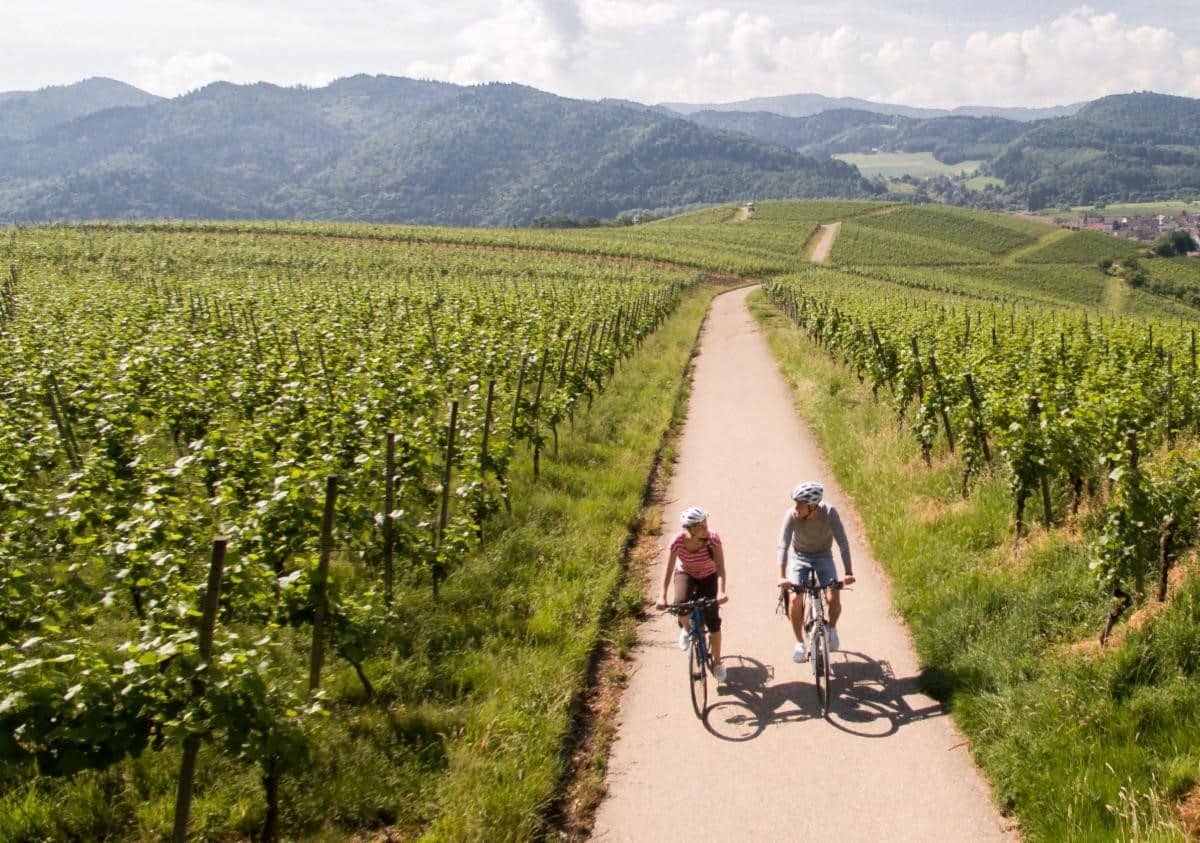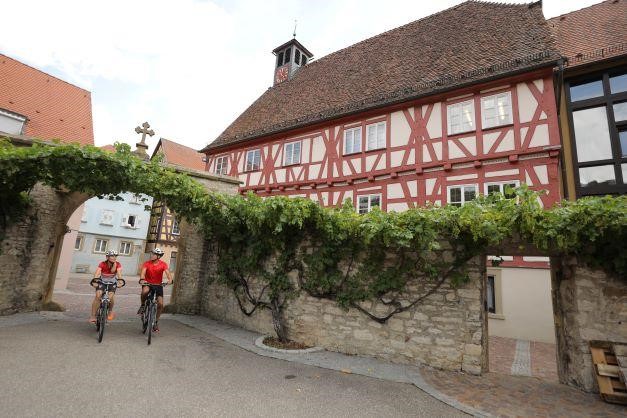
The Sunny Side of Germany ☀
Welcome to sunny SouthWest Germany, a very special vacation destination. Start with historic cities. Heidelberg is one of Europe’s most romantic, with its castle, river and university. Stuttgart, the region’s capital, boasts art museums, opera and two of the world’s best car museums. After all, this is where the automobile was patented almost 135 years ago!
For elegance and relaxation, nowhere surpasses Baden-Baden, with its natural mineral spas and stylish casino.
And SouthWest Germany is the country’s best region for gourmets and wine lovers, with Michelin-starred restaurants as well as informal taverns – all serving award-winning local wines.
The unspoiled countryside is perfect for hiking and biking, from the Black Forest to Lake Constance; while Europa-Park, one of the world’s top theme parks, offers family fun. All these and much, much more are right here on our website.
-
23 Sep 24
NEWS
Southwest workers warned of ‘difficult decisions’ aheadSouthwest Airlines has forewarned its workers there could be some tough times ahead. It ...Read moreSouthwest workers warned of ‘difficult decisions’ ahead - News & announcementsSouthwest Airlines has forewarned its workers there could be some tough times ahead. It comes as the airline tries to restore profitability while working to head off demands for change by activist investor Elliott Investment Management. In a video message to the workforce, COO Andrew Watterson said tough decisions are ahead. The airline is looking at optimizing its flight network to increase efficiency and revenue. This could mean dropping some routes. "I apologize in advance if you as an individual are affected by it," Watterson said. He gave no other hints about what lies ahead for the airline. The airline has already announced some fundamental changes are coming regarding it seating policy and premium service. It will also offer red-eye flights for the first time. It will present its new strategy to investors later this week.Related News Stories: News Archive - Page 832 of 9290 - TravelMole News Archive - Page 900 of 9291 - TravelMole Breaking Archives - Page 720 of 1515 - TravelMole
-
03 Jun 23
Partner News
Taste Treats and Gourmet Creations – SouthWest Germany’s culinary inventionsSouthWest Germany, the German federal state of Baden-Württemberg, is known for its inventors. Both ...Read moreTaste Treats and Gourmet Creations – SouthWest Germany’s culinary inventions - News & announcementsSouthWest Germany, the German federal state of Baden-Württemberg, is known for its inventors. Both the car and the bicycle were invented here. But the tradition of innovation extends to more than technology. When it comes to food, the creative instinct has been – and still is – just as strong. And it is not limited to just one part of SouthWest Germany. Here are six examples of new ideas that were developed across the region, from Mannheim down to the southern Black Forest. Ritter Sport: Dare to Be Square “Quadratisch. Praktisch. Gut” / “Quality. Chocolate. Squared.” That’s the motto on every bar of Ritter Sport, the chocolate bar, whose square shape fits oh-so easily into your pocket. Millions of brightly-coloured bars of different, wittily-named flavours leave the factory in Waldenbuch every day. Back in 1932, in this small town, 30 minutes south of Stuttgart, Clara Ritter had a brilliant idea. Instead of producing rectangular bars of chocolate, the family business should change to a square, thick shape. Why? Because it would fit easily into a jacket pocket and wouldn’t break. In 1976, Alfred Otto Ritter, her son, decided to expand the range, to include unusual flavours, varieties, and Knick-Pack packaging. The Waldenbuch success story conquered the world and today exports to over 100 countries. Alongside the Ritter factory is the SCHOKOSHOP outlet store and a modern art museum – with square pictures! ritter-sport.com/en Fontanella Spaghetti Ice Cream: The Mannheim Taste Treat It looks like a plate of pasta with tomato sauce and grated Parmesan, but it is cold, sweet and totally yummy. Today, spaghetti ice cream is a bestseller in every German ice cream parlour, but it was not born in Italy. It was invented in the city of Mannheim. There is, however, an Italian connection. In 1969, teenager Dario Fontanella was experimenting in his father's ice cream parlour. He picked up a familiar kitchen gadget used for making Spaetzle, the egg noodles that are a typical Swabian dish – and used it to produce ice cream instead. After much trial and error, the squiggly, wriggly ice cream “noodles” were born. Made from vanilla ice cream, doused with strawberry purée and white chocolate, a brand-new taste treat was born: spaghetti ice cream! eisfontanella.de Rems Valley Gems: Wine Pearls A few years ago, winemaker Daniel Kuhnle invented a taste experience that was brand new and truly unique: Käpsele or wine pearls. These are tiny “balls” of wine, which are coated with a vegan alginate. Think of them as wine “pearls”, or wine “caviar”. Use them in the kitchen and in the bar. They are delicious straight out of the tin, served over ice, put into soup or a sauce, or added as a stylish garnish. The small globules keep their shape and consistency even when heated. In the Remstal valley, near Stuttgart, Kuhnle himself recommends that his white and rosé wine pearls are served slightly chilled. No wonder he was awarded Baden-Württemberg’s prize for innovation in 2019. gandelhof.de The Spaetzle Shaker: As Easy as 1, 2, 3 Spaetzle, egg noodles, are a much-loved dish in SouthWest Germany. But making spaetzle by hand is a long and laborious task. One day in Tübingen, 40 minutes south of Stuttgart, when Susann Hartung’s son Julien asked for his favourite food yet again, she had a brainwave. She bought a plastic jar and drilled some holes in the lid. Into the jar went the ingredients for the dough, along with some marbles to aid the mixing. The idea was simple: shake a few times; give a quick squeeze. Hey presto! Out come spaetzle! The spaetzle shaker was born! Now this handy gadget enables busy parents – and their children – to make an age-old family favourite quickly and easily. spaetzle-shaker.de Preserving Jars: Grandma Was Right! In the past few years, many of us have rediscovered the joys of preserving food. The techniques are much the same as in Grandma’s day: prepare, cook, seal and store. What helped the process was the 1892 invention of glass jars with a rubber seal and a metal locking mechanism. These were the brainchild of Johann Carl Weck, who lived in Öflingen, a village near Waldshut in the southern Black Forest. This part of SouthWest Germany is known for the quality and quantity of its orchard fruits and vegetables. Weck’s jars, with their trademark orange rubber seal, meant that everyone could preserve delicacies like asparagus and strawberries and enjoy them even in the depths of winter. And we still can today! www.weck.de -
26 May 23
Partner News
Wine and Food Trails in SouthWest GermanyBaden-Württemberg is known as the home of many regional foods that are natural ...Read moreWine and Food Trails in SouthWest Germany - News & announcementsBaden-Württemberg is known as the home of many regional foods that are natural and sustainable, involve delicious recipes, and fun hiking and biking. We have several examples to share with you this month where you can go solo, as a couple or with a family or group. The panoramic hops tour through orchards and fields above the village of Tettnang is a chance to learn about the hops growing process and to relax at the end with a really good beer and meal. The themed hiking trail around Enzklösterle, at the northern end of the Black Forest is about seven miles long and runs past many blueberry bushes throughout forests and fields.The “Badische Weinstrasse” (Baden Wine Route) snakes its way for over 300 miles through Baden’s most beautiful wine-growing regions and is perfect for a biking tour interspersed with delicious meals and wines and charming villages and castles. The Württemberg Wine Trail is just as beautiful with its river landscapes, unique steep-slope vineyards, mild climate, winegrowing villages, world-famous art treasures in Stuttgart, excellent restaurants, cozy broom inns and modern wine shops. In the Black Forest Highlands, you will find the Zaepfle path in and around the Rothaus brewery where you will learn interesting information about the brewery's history, fine beer, the unique Black Forest flora and fauna, and of course, the legendary spirit of the source, the delicious water. The Rothaus restaurant serves delicious traditional meals and has a hotel that is a perfect location for discovering the area. Please enjoy our active pursuit of good wine, delicious food, and our beautiful countryside.
The Blueberry Village of Enzklösterle
The idyllic blueberry village of Enzklösterle is located between Pforzheim and Freudenstadt in the northern Black Forest. The fir forests around Enzklösterle offer an ideal breeding ground and therefore the blueberries grow abundantly here and, at one time, helped to feed and secure the livelihood of entire families. From July 21 to 30, the entire village of Enzkloesterle celebrates their delicious blueberries. Everyone knows the Black Forest gateau but in Café Klösterle you can learn how the real Black Forest blueberry cake tastes. And then you decide for yourself which one tastes better to you. Also, have you ever heard of the "Wilde Heidi"? This is a cocktail created in Enzklösterle of blueberry liqueur, sparkling wine and wild blueberries. Her alcohol-free sister is the "Gentle Heidi." They also create beautiful products and delicious spreads, including blueberry mustard, vinegar, jam "Gsälz," spread, chocolate, teas, drinks, gift items and even table linens. Best of all, there is a delicious themed hiking trail around Enzklösterle, about seven miles long through the forests and vales past many blueberry bushes.
The Baden Wine Cycle Path through the Black Forest
The wine-growing country “Baden” on the western part of the Black Forest region is one of Germany’s largest wine-growing areas. The “Badische Weinstrasse” (Baden Wine Route) snakes its way for over 300 miles through Baden’s most beautiful wine-growing regions. It winds through picturesque wine-making villages, little half-timbered towns and vineyards between the Black Forest and the Rhine, in Southwest Germany. The “Badische Weinstrasse” is often known as “Baden’s gourmet route” thanks to its village inns and regional specialities, from asparagus to bacon. The “Baden Wine Cycle Path” connects the Baden wine regions for around 300 miles. It begins in Grenzach on the German-Swiss border and continues over the Isteiner Klotz through the wine region Markgräflerland. Kaiserstuhl invite you to drive further north and explore the terraced vineyards. Alternatively, you can also choose the variant past Freiburg's old town and the Glottertal. Cyclists come to Ortenau through the vineyards of the Breisgau. Passing Ortenberg Castle, the route continues in the direction of Karlsruhe and turns off into the Kraichgau near Bruchsal. Heidelberg is a real gem before the cycle path ends in Laudenbach on the “Badische Bergstrasse”. The route, which you can also do with an E-bike, covers approximately 1,000 feet in altitude and runs mostly on paved paths.
Insider Tip: Wuerttemberg Wine Cycle Path Offers Winding Roads,
Unique Vineyards
Dreamlike river landscapes, unique steep-slope vineyards, mild climate, idyllic winegrowing villages, world-famous art treasures, excellent restaurants, cozy broom inns (seasonal pop up wine taverns in summer and fall marked by a broom outside their doors) and modern wine shops invite you to discover the Württemberg Wine Trail. The best way to experience wine culture is by bike as the Württemberg Wine Cycle Path meanders over a total length of 250 miles. Traditional Württemberg grape varieties such as Trollinger, Lemberger or Riesling are reinterpreted by innovative young Württemberg winemakers. Along the cycle path there is always the opportunity to make personal acquaintance with these creative minds of the Württemberg wine scene and to taste their wines. The wines and winemakers have won many awards. Particularly impressive is the unique viticulture in terraces and steep slopes, which are cultivated by winegrowers in painstaking manual work and which characterize the Württemberg cultural landscape. On the route of the Württemberg Wine Cycle Path, you will find the town of Heilbronn, the oldest wine town in Württemberg, and the capital city of Stuttgart. Picturesque wine villages, characterized by half-timbered houses and viticulture, invite you to visit and linger. Wine museums and wine trails also provide information about the history and special features of Württemberg wine in numerous places.
Tettnang Hops Trail SouthWest Germany
Close to the Alps and Lake Constance, you will find the Tettnang Hops trail that will take you from farmer to brewer. The Kronenbrauerei in Tettnang and the Tettnang Hops Museum in Siggenweiler mark the beginning and end of the four-kilometer Tettnang Hop Trail. Set against a backdrop of unspoiled countryside, winding through hop gardens and orchards, there are information boards at the edge of the path provide walkers and cyclists with an initiation into the secrets and features of hops cultivation and the art of brewing. Nestled between the northern shore of Lake Constance and the Allgäu region, Tettnang is a small town that was also the seat of the counts of Montfort and is Germany’s most southerly hops growing region.The unique landscape is particularly good for growing hops and there is a big focus on the environmental aspects of agriculture and hops farming. For over 175 years, hops have been grown and developed in the region. They come out only with a touch of bitterness which is exactly what master brewers from around the world value in aroma hops. Traditional hotels and restaurants before and after the path are destinations in themselves from the Gasthaus zur Krone to the Hotel Rad.
Rothaus Brewery in the Black Forest Highlands
Along the Zaepfle path in and around the Rothaus brewery in the Black Forest Highlands, you will learn interesting information about the brewery's history, taste fine beer, explore the unique Black Forest flora and fauna, and see the legendary spirit of the source, the delicious water. Located in the middle of the Black Forest Highlands, the Zaepfle path leads through a beautiful landscape, and of course, includes the Rothaus Brewery. At a total of nine stations and three pavilions, a wealth of information is provided on the topics of raw materials from the region, how quality is created, and environmental methods and sustainability. are practiced. As a manufacturer of pure natural products, Rothaus has the greatest interest in preserving its environment and is committed to sustainable management. To that end, the company switched from heating oil to renewable energy in 2008 for the supply of thermal energy. It is currently the largest biomass heating system running in a brewery in Germany. In addition, Rothaus obtains 100% regional green electricity, which comes from the hydropower plants on the Upper Rhine. The brewery has optimized its use of state-of-the-art production facilities with high energy efficiency and optimized energy consumption in recent years. The meals are delicious and traditional, and the excellent restaurant is part of the hotel next to the brewery. -
26 May 23
Partner News
Celebrating 40,000 years of history – Southwest Germany’s seven UNESCO World Heritage Sites tell the story of mankind from the Stone Age right up to todaySouthWest Germany, the German federal state of Baden-Württemberg, is rich in cultural monuments. In ...Read moreCelebrating 40,000 years of history – Southwest Germany’s seven UNESCO World Heritage Sites tell the story of mankind from the Stone Age right up to today - News & announcementsSouthWest Germany, the German federal state of Baden-Württemberg, is rich in cultural monuments. In fact, seven of Germany’s 50 or so UNESCO World Heritage Sites are between Lake Constance in the south and northern Baden-Württemberg. They span some 40,000 years, from caves with the oldest Ice Age art to Stuttgart’s modernist houses designed by architect Le Corbusier. In between are recreations of lakeside Stone Age pile dwellings and the Limes, which marked the border of the Roman Empire, plus medieval monasteries and the spa culture in Baden-Baden.The Swabian Alb: Caves and Ice Age Art
In 2017, six limestone caves in the Lone Valley and the Ach Valley were designated as World Heritage sites. Why? Because of the astonishing artworks created by the people who lived there some 35,000 to 40,000 years ago. Unearthed after decades of research by archaeologists, these treasures include around 50 small sculptures. Made of mammoth ivory, they are among the world’s oldest examples of figurative art. Also discovered were eight flutes carved from bone, which are some of the world's oldest musical instruments. These fascinating Ice Age artefacts are in various museums in SouthWest Germany. Ninety minutes southeast of Stuttgart, the Blaubeuren Museum of Prehistory is home to the so-called "Venus from the Hohle Fels". The University of Tübingen museum showcases the 40,000-year-old Vogelherd horse, found in the Vogelherd cave, which is part of the Niederstotzingen Archäopark. And in Stuttgart, the state museum (Landesmuseum Württemberg) houses a little lion's head, also from the Vogelherd cave, as well as a mammoth figure and a bone flute from the Geissenklösterle archaeological site, near Blaubeuren. welt-kultursprung.de/enLake Constance and Upper Swabia: Lakeside prehistoric pile dwellings
One of the best living history museums dedicated to the Stone Age is in Unteruhldingen on Lake Constance: the Pile Dwelling Museum (Pfahlbaumuseum). This recreates the life of the Neolithic hunter-gatherers, whose homes were on wooden piles, over water on the edge of lakes. In 2011, these were among the Stone Age pile dwelling settlements in six Alpine countries that were listed as UNESCO World heritage sites. Nearby, in Upper Swabia, there are more well-preserved traces of pile dwellings on Federsee Lake. In Bad Buchau, the Federsee Museum has archaeological finds and 12 reconstructed houses from the Stone and Bronze Ages. Visitors can take a guided tour and watch archaeologists at work during the excavation season (July to September). pfahlbauten.com/enAalen: The Limes, the former border of the Roman Empire
Back in 2005, Britain’s Hadrian's Wall and SouthWest Germany’s Limes were added to the UNESCO World Heritage lists. Ninety minutes east of Stuttgart, the former border of the Roman Empire runs for 164 km / 100 miles. This is Europe’s largest archaeological monument, and it passes through the wooded landscapes of the Neckartal-Odenwald, the Swabian-Franconian Forest nature parks and the Hohenlohe region. Follow the border on foot or by bike on the well-marked Limes Cycle Path. For information on the numerous reconstructions and museums, stop at the Limes Information Centre in Aalen. limesstrasse.de/enReichenau: The historic island monastery
After the Roman era, Christianity spread across Western Europe. At the western end of Lake Constance, the island of Reichenau has insights into the early Middle Ages and the everyday life of Benedictine monks. Notable are three churches dating from the 9th to the 11th centuries: the atmospheric abbey church of St Mary and St Markus in Mittelzell, the church of St Peter and St Paul in Niederzell, and St George’s Church in Oberzell, with its well-preserved 1,000-year-old murals. Taken together, they are like a time machine. As for the Reichenau Museum, this provides an overview of the art and cultural history of this very special monastery island that was listed by UNESCO in 2000. bodensee.eu/enMaulbronn: The most intact medieval monastery north of the Alps
An hour northwest of Stuttgart, the former Cistercian monastery at Maulbronn is a beautifully preserved Gothic complex, which provides rare insights into monastic life in the Middle Ages. No wonder it has been on UNESCO’s World Heritage List since 1993 and is often used as the backdrop for historical films. Although the monks left after the Reformation, the buildings were not left empty. A school and seminary were set up and famous graduates include Johannes Kepler and Nobel prize winning author Hermann Hesse. The school still exists with girls as well as boys; the monastery is open to all. kloster-maulbronn.de/enBaden-Baden: Europe’s most glamorous spa town
Between 1700 and the 1930s, spa towns were the places to see and be seen in Europe. And two hours west of Stuttgart, Baden-Baden was one of the prime destinations for the European aristocracy. But its spa tradition began in Roman times, when the city's 12 thermal springs provided both medical cures and relaxation. In the 18th century, the town developed into a sophisticated resort, offering both spa treatments and culture. This tradition continues, from the elegant Kurhaus and its casino to the magnificent Friedrichsbad spa, and from the riverside gardens to art museums and a grand concert hall. In 2021, UNESCO named Baden-Baden as a World Heritage Site, as one of the Great Spa Towns of Europe. This group designation recognizes the historic and cultural importance of 11 towns in seven countries. As for the unique spa experience, that continues to thrive, with traditional and modern treatments, which are open to all. baden-baden.com/enStuttgart: Le Corbusier's architectural revolution
In the 1920s, modern architecture was sweeping across Europe. And Stuttgart was one of the centres of avant-garde design. On a walk through the Weissenhof Estate (Weissenhofsiedlung) on the Killesberg hill, it is easy to see how the leading architects of the modern era changed the way we live. Built in 1927 as part of a national exhibition, the houses were examples of new ideas and new technology. Of the original 33 houses, 22 still stand and several are still homes. A century later, houses designed by Mies van der Rohe and Hans Scharoun look remarkably contemporary. Since 2016, two of Le Corbusier’s homes have been a UNESCO World Heritage Site. One has as an exhibition about the history of the estate; the other recreates what Le Corbusier called a “transformable dwelling”. Together they make up the Weissenhof Museum, a fascinating way to understand how the early 20th century viewed the future. weissenhofmuseum.de/en
 United Kingdom
United Kingdom United States
United States Asia Pacific
Asia Pacific











